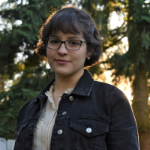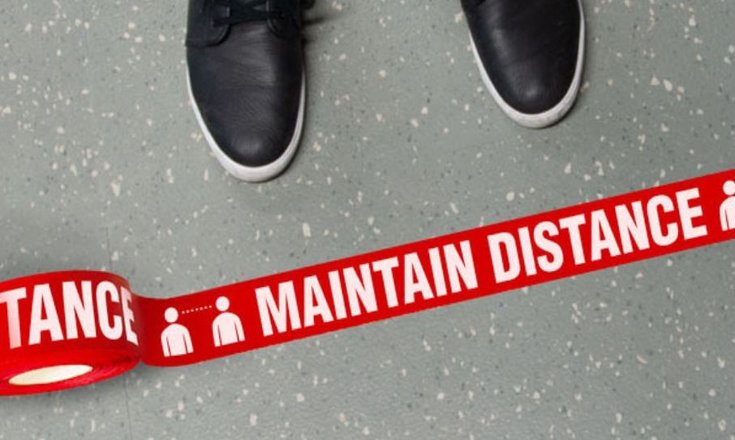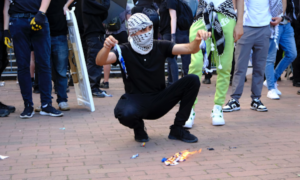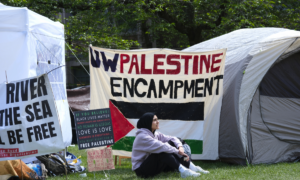Across Washington State, public academia mobilizes strategies for uncertain COVID-19 fall status.
As the Washington State economy reopens through the summer, many speculate a second wave of the COVID-19 crisis will overwhelm the U.S. this coming fall. As regulations ease, academic institutions have become wary of the social urge to integrate students back into the classroom and hesitant due to the uncertain future of this unprecedented modern-era pandemic.
Public academic establishments are being faced with budget cuts, instructional development and technological mobilization at a rapid pace that tests the modern framework of 21st century innovation, alongside confrontation of market demands that have left essential resources in shortage. These colleges and universities across Washington State are being challenged to pave an extremely flexible path forward.
Washington State University Interim Provost and Executive Vice President Bryan Slinker assumes that at best the university will be hybrid during the fall 2020 semester. Over the course of the summer, instructional designers are working with cohorts of faculty to prepare for the fall. With over 350 faculty members signed up to work in teams to strategize virtual academia, WSU expects to have the first month of fall semester ready to go by the end of summer.
“We’re prepared with a mixture of content online to flip the classroom, allowing us to flex between different strategies depending on how large of groups we can assemble, and have online content to support all of the students,” says Slinker.
In Des Moines, WA, Highline Community College decided as of May 1 what course of action to pursue for fall as well. Like WSU, Highline is preparing operations for online and possible hybrid instruction. Faculty were given the opportunity to develop their class framework for either hybrid, online, or in-person instruction, but at the risk that the changing status of the COVID-19 crisis may bar many from campus. Emily Lardner, Interim Vice President for Academic Affairs at Highline Community College believes this enables a sense of management at the hands of staff and students.
“It was our best effort to give everybody as much control,” says Lardner, “and as much choice as possible knowing that we have no control of the big situation.”
According to a presidential message on Eastern Washington University’s webpage, faculty will also remain flexible between hopeful hybrid classes and virtual distance learning for their fall 2020 semester.
The Spokane College District is taking a similar approach, where faculty is being asked to prepare for both online and in-person teaching operations. Lorraine Nelson, Communications Manager of the Spokane Colleges District, believes outreach efforts have reflected positive feedback from students. The results of a survey asking students if they needed personal assistance or support, portray a decreasing demand for help as students adapt to distance learning, easing the preparation for fall quarter.
“It turned out to be 15% of those that we surveyed did want us to reach out and talk with them, and help them,” says Nelson. “Now that’s dropping.”
Pierce Colleges pursues this same path, offering two modes for its fall 2020 quarter- online and hybrid. According to Michael Wark, Vice President of Strategic Advancement for Pierce Colleges, the district is organizing hybrid instruction so that the district could end up being virtual if need be. Pierce Colleges is taking action of its own to protect staff and students if students are integrated back onto campus in the fall.
“We’re looking at Plexiglass shielding that we can put in places where students and faculty interact,” says Wark. “We are also arranging for signage both to let people know to stay six feet apart and things on the floor to show them where.”
Advancement of instruction and operations are not the only arrangements being developed for the ambiguous future. Colleges and universities across the state are gathering PPE and technology to prepare a safety net for changing and expected conditions. Varying institutions are experiencing difficulties with a shortage of these resources, but are persevering, nonetheless.
“We ordered 200 hotspots, 109 of them arrived, and we didn’t know how long to get the rest,” says Wark. “We were fortunate to meet the immediate need for laptops with what we had on hand. It’s been hard to gather masks, but we just received a couple thousand. We’ve got 7,000 more on order in preparation.”
Washington State University has also gathered more PPE in case of a second wave in the fall, also encountering difficulties to gather hotspots which have been in especially high demand. Despite this, colleges and universities have managed to supply Wi-Fi in school parking lots, not giving up on the efforts to support students’ access to education.
Highline has faced a unique disruption as a limit for hotspots by their provider has prevented the college from attaining resources needed.
“That is a political project of democratizing access to the internet.” says Lardner, referring to the company’s limits on hotspots.
She says Highline is going to survey students to get a grip on the size of the problem, to help the establishment think about what the situation is. It’s got a satirical twist though.
“I don’t know, the irony of surveying students using the internet survey about their access to the internet, well…” continues Lardner, seemingly unsure of the strategy, but emphasizing that communication efforts are proving to be effective and popular among students.
Expected dramatic revenue loss within this next year has prodded public academic institutions to advance discussions on optimizing operations and the framework of their establishments under an incoming financially stressful situation. Slinker has an idea of what this might look like for Washington State University.
“We just got the governor’s memo yesterday (May 13, 2020) for what to plan for budget cuts,” says Slinker. “They’re coming, probably for the next three years.”
The question that students are showing most concern about is how this may impact their access and quality of education.
“We’ll preserve student success programs and access to education as a high priority,” says Slinker, “but we’ve made no decision as to tuition and neither has the legislature.”
This prompts discussions about how to allocate the CARES Act money. Pierce Colleges also has an idea of where financial support will be used to support changing instruction.
“We’re still waiting for the guidelines but we’re going to assume the money will be targeted towards supporting students in the virtual environment,” says Warke. “It’ll help us acquire more hotspots and laptops.”
Lardner conveys the significance of student participation within this sociopolitical issue to advocate for their access to education, anticipating balances of costs to be shifted no matter what.
“I hope students advocate for tuition not to go up, but it’s going to be at the expense of mental health services or homeless services,” says Lardner. “We are just not going to have enough money in our state accounts to do all the things that good state governments could do.”
Showing determination to provide students with resources and access to education under incoming financial and market stress alongside changing environments is an effort being promoted, even though there’s an uncertain path forward. Public academia across the state continues to support the demand for higher education by persevering through this historic era.
Author

Alexa is an avid journalist seeking an A.A. with an emphasis on Global Studies at Seattle Central College. She's interested in pursuing investigative journalism to report on social struggles like immigration, civil rights, and access to education in South and North America. She is currently working to cover budget cut reforms at Central and civil rights movements in Seattle. Alexa is also a Youth Council Member at OneAmerica, advocating for greater access to quality education for immigrants and refugees in WA. She is a first-generation American who has travelled to 13 countries to explore world cultures and politics.












Be First to Comment